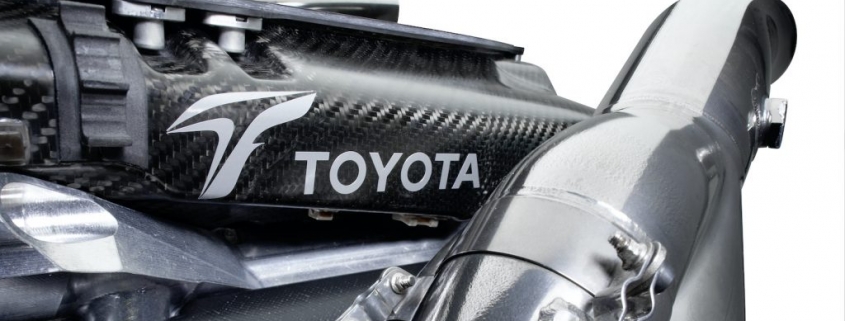Toyota Engine Names Explained
Do Toyota engine names look like confusing strings of random letters and numbers? Toyota engine names follow a standard naming convention; Toyota packs each engine name (or code) with helpful information. Read on to have Toyota engine names explained. You may learn more than you expected about the engine in your Toyota.
The First Number In A Toyota Engine Name: Model Number
Almost every Toyota engine name begins with a number. This number represents that engine block’s model number. Some Toyota fans refer to this number as the engine’s generation.
Toyota usually designates a new engine model number/generation when it designs a new engine–with a different displacement–around an existing engine block.
In the past, Toyota has not bothered using the number one (1) to designate the first generation of the engine in a brand new engine family. Instead, these engine names often begin with the letter(s) of the engine family.
Engine model number/generation examples:
- 2NR-FE belongs to the second model of its engine family.
- 3S-GTE belongs to the third model of its engine family.
- 1KD-FTV belongs to the first model of its engine family.
- R-LPG also belongs to the first model of its engine family.
- 22R-E belongs to the twenty-second model of its engine family.
The First Letter(s) in a Toyota Engine Name: Engine Family

The first one or two letters in a Toyota engine name (after the generation, before the dash) designate the engine’s family. Toyota engine families can last for decades, but all their members share a layout and often a block. Learn more about Toyota engine families.
Engine family examples:
- 3S-GTE belongs to the S engine family: older inline-four (I4) engines built around a cast-iron block.
- 2NR-FE belongs to the NR engine family: small, recent I4 engines built around an aluminum block.
- 1KD-FTV belongs to the KD engine family: diesel I4s.
- R-LPG belongs to the R engine family: older I4 gas engines designed for longitudinal placement.
- 22R-E also belongs to the R engine family.
Toyota Engine Families Chart

| Abbreviation | Description |
|---|---|
| AR | I4 aluminum engine introduced in 2008. 2.7L and 2.5 L. |
| AZ | I4 aluminum block DOHC. Upsized NZ. 2002 and later. |
| E | I4. 1986 and later. First Toyota engines with a timing belt instead of chain. |
| F and FZ | I6. Cast iron blocks and heads known for durability. |
| GR | V6. Aluminum construction, DOHC, fuel-injected. |
| LR | V10. Exclusively for Lexus LFA Supercar. |
| MZ | V6. Lightweight aluminum replacement f or VZ. Replaced by GR. |
| NR and NZ | I4. 1.5L. Common in the Prius. Aluminum, DOHC, VVT-i, Atkinson Cycle. |
| R and RZ | I4. Long-running engine series common in trucks, SUVs, and some cars. |
| S | I4. Strong cast-iron block, sought for performance builds. 1982-2007. |
| T and TR | I4. Known for reliability and performance through the 1970s and early 80s. |
| U | Boxster-style two-cylinder and four-cylinder engines. Revived for 2011 Subaru partnership. |
| UR | V8. 4.6-5.7L. Replaced UZ series, offered timing chains and Dual VVT-i. 2007-present. |
| UZ | V8. Quad-camshaft, 32 valve, introduced in 1989. |
| VZ | V6. 2.0-3.4L. Engineered for low and mid-range torque. Introduced in 1988. |
| ZR | I4. 1.6-2.0L. VVT-i. Introduced in 2007. |
| ZZ | I4. 1.4-1.8L. Replaced the popular 4A engine. Chain-driven cam, DOHC, four-valve heads. |
The Suffix Of A Toyota Engine Name: The Engine’s Defining Features

After every Toyota engine’s model number/generation and engine family, the engine name contains a dash and then one, two, or three letters. Each of these letters is a code for one of the engine’s defining features. Many engines have more than three key features, but no Toyota engine name lists more than three defining features.
Often, the attributes represented in the suffix separate the engine model variation from its closest cousins. Other times, the features Toyota represents in the engine name are significant technological achievements.
As Toyota technology evolved, the features represented by each letter evolved as well. See our engine name suffix feature chart below for the most recent feature codes.
Engine feature examples:
- 3S-GTE is defined by a performance cylinder head DOHC (G), being turbocharged (T), and multi-point fuel injection (E)
- 2NR-FE is distinguished for: a normal cylinder head DOHC (F), and multi-point fuel injection (E)
- 1KD-FTV is known for: normal cylinder head DOHC (F), being turbocharged (T), and a D-4D common rail direct diesel injection (V)
- 22R-E was defined by: fuel injection (E)
Toyota Engine Features Chart

| Suffix | Feature |
|---|---|
| A | Valvematic variable lift intake head |
| B | Newer: E85 Ethanol fuel Pre-2000: Twin SU-style side-draft carburetors |
| C | Newer: California Emissions Controlled Older: Carbureted |
| D | Newer: Manufactured by Daihatsu with VVT-i Older: Twin downdraft carburetors |
| E | Multi-point fuel injection |
| F | Normal cylinder head DOHC |
| G | Performance cylinder head DOHC |
| H | High compression |
| I | Single-point fuel injection |
| J | Newer: Pollution control for commercial cars in Japan Older: Autochoke |
| K | On-demand Atkinson cycle in non-hybrid engines |
| L | Transverse-mounted |
| M | Philippines’ market |
| N | CNG fuel |
| P | LPG fuel |
| R | Low Compression (For 87 and below octane fuel) |
| S | Newer: D4-S Gasoline direct injection 1980s: Swirl intake |
| T | Turbocharged |
| U | With Catalytic converter. Japan-spec emissions |
| V | Diesel: D-4D Common rail direct injection system Gasoline: Manufactured by Daihatsu with VVT-i |
| X | Hybrid Atkinson cycle |
| Z | Supercharged |
Conclusion

Toyota engine names may seem overwhelming, but when you decode the name of any Toyota engine, you will gain valuable insight into the history and features of that engine model.
Today, Toyota is moving to consolidate its hundreds of engine options into a single engine family: the Toyota Dynamic Force engine. With this dramatic shift, previous engine naming conventions will only apply to old Toyota engines. But while restoring classic Toyotas, the ability to decode an engine name will be more important than ever.
RELATED: 2022 Toyota Tundra TRD Pro: A Cost-Effective Ford Raptor
The post Toyota Engine Names Explained appeared first on MotorBiscuit.







